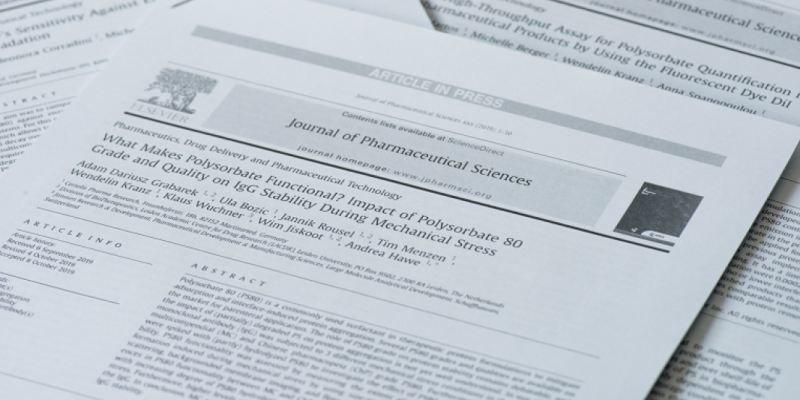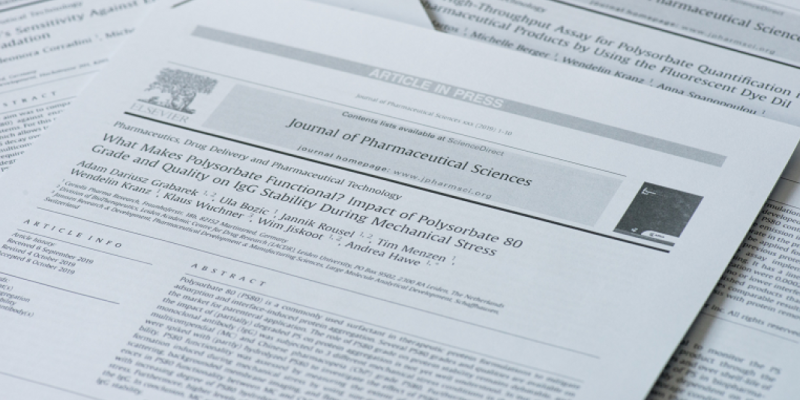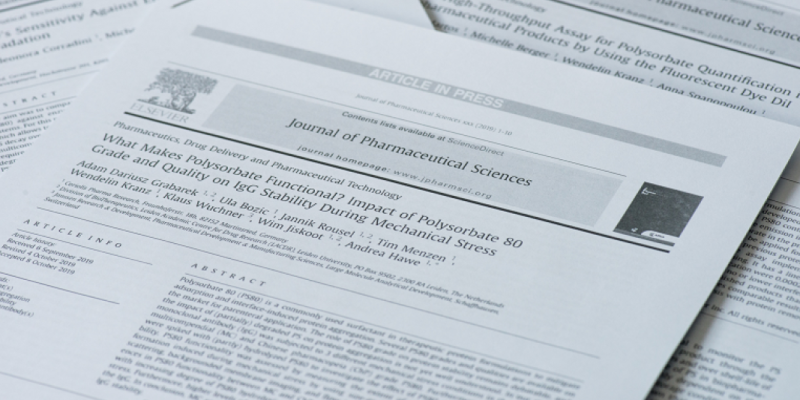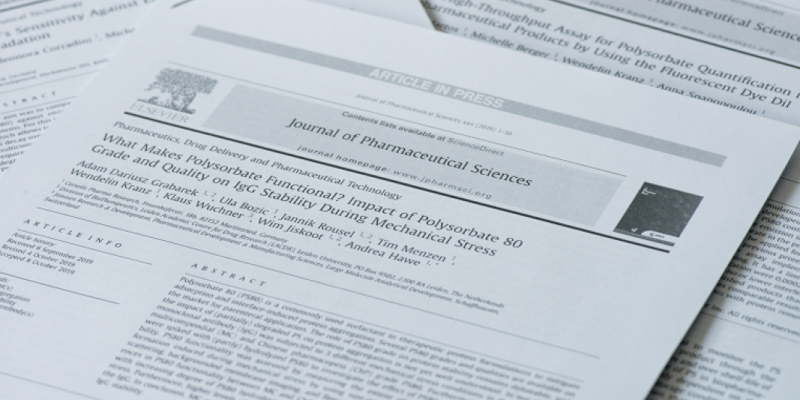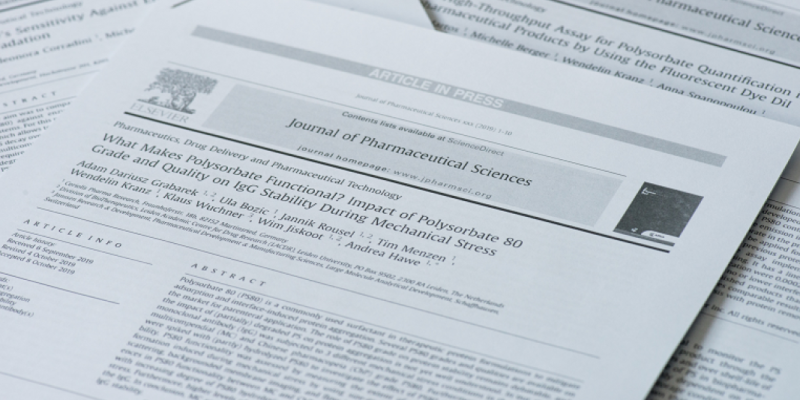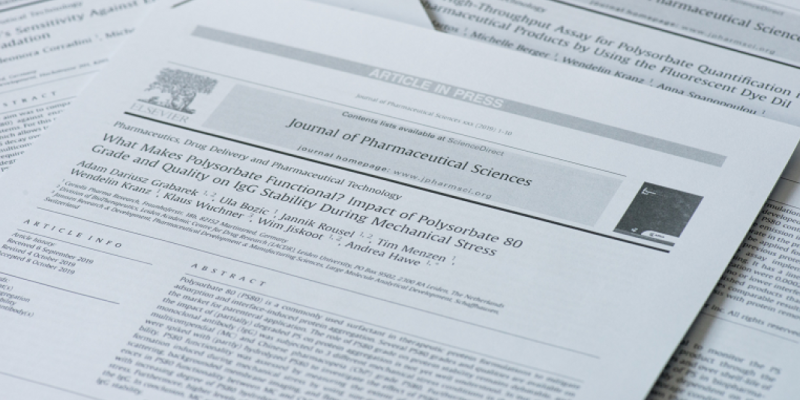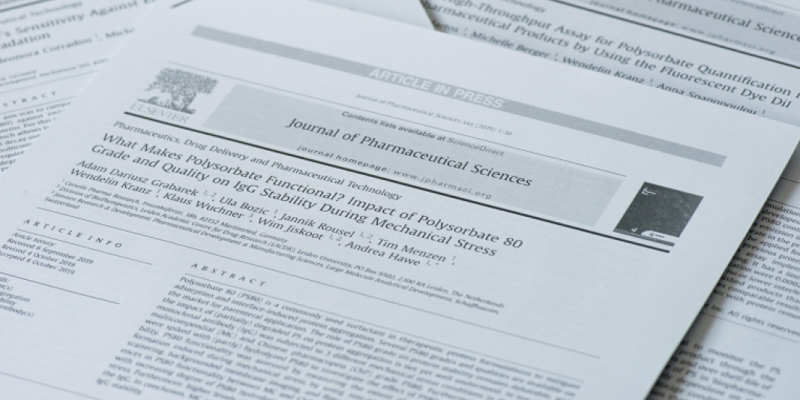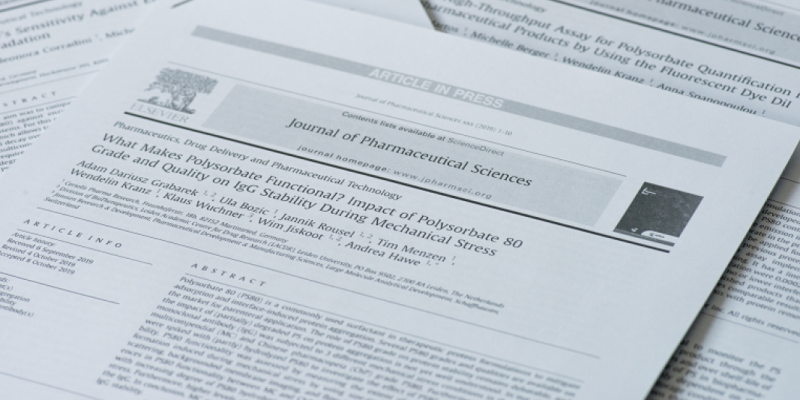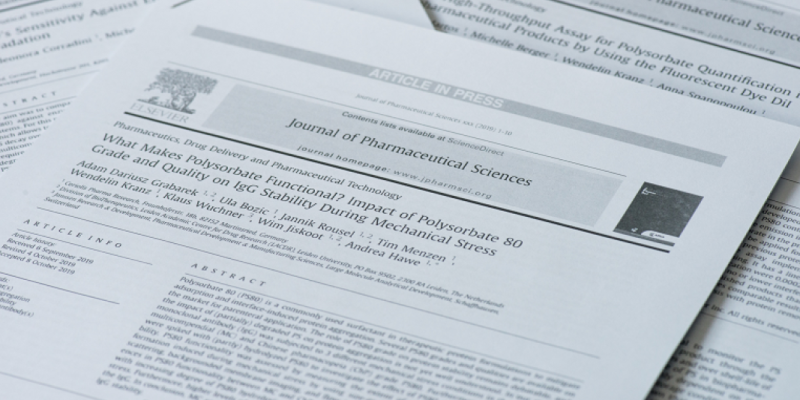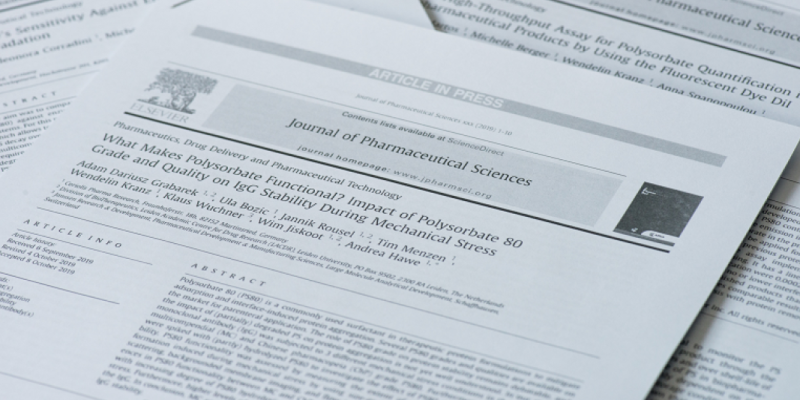Optimization of a pharmaceutical freeze-dried product and its process
Talanta. 2011 Feb
Optimization of a pharmaceutical freeze-dried product and its process using an experimental design approach and innovative process analyzers.
The aim of the present study was to examine the possibilities/advantages of using recently introduced in-line spectroscopic process analyzers (Raman, NIR and plasma emission spectroscopy), within well-designed experiments, for the optimization of a pharmaceutical formulation and its freeze-drying process. The formulation under investigation was a mannitol (crystalline bulking agent)-sucrose (lyo- and cryoprotector) excipient system. The effects of two formulation variables (mannitol/sucrose ratio and amount of NaCl) and three process variables (freezing rate, annealing temperature and secondary drying temperature) upon several critical process and product responses (onset and duration of ice crystallization, onset and duration of mannitol crystallization, duration of primary drying, residual moisture content and amount of mannitol hemi-hydrate in end product) were examined using a design of experiments (DOE) methodology. A 2-level fractional factorial design (2(5-1)=16 experiments+3 center points=19 experiments) was employed. All experiments were monitored in-line using Raman, NIR and plasma emission spectroscopy, which supply continuous process and product information during freeze-drying. Off-line X-ray powder diffraction analysis and Karl-Fisher titration were performed to determine the morphology and residual moisture content of the end product, respectively. In first instance, the results showed that - besides the previous described findings in De Beer et al., Anal. Chem. 81 (2009) 7639-7649 - Raman and NIR spectroscopy are able to monitor the product behavior throughout the complete annealing step during freeze-drying. The DOE approach allowed predicting the optimum combination of process and formulation parameters leading to the desired responses. Applying a mannitol/sucrose ratio of 4, without adding NaCl and processing the formulation without an annealing step, using a freezing rate of 0.9°C/min and a secondary drying temperature of 40°C resulted in efficient freeze-drying supplying end products with a residual moisture content below 2% and a mannitol hemi-hydrate content below 20%. Finally, using Monte Carlo simulations it became possible to determine how varying the factor settings around their optimum still leads to fulfilled response criteria, herewith having an idea about the probability to exceed the acceptable response limits. This multi-dimensional combination and interaction of input variables (factor ranges) leading to acceptable response criteria with an acceptable probability reflects the process design space.
Talanta. 2011 Feb
https://www.sciencedirect.com/science/article/pii/S0039914010009318?via%3Dihub=

